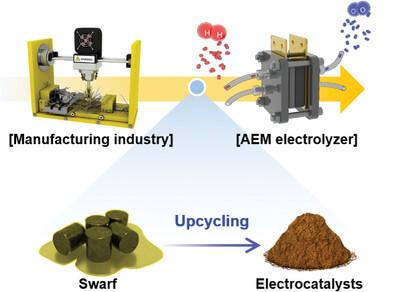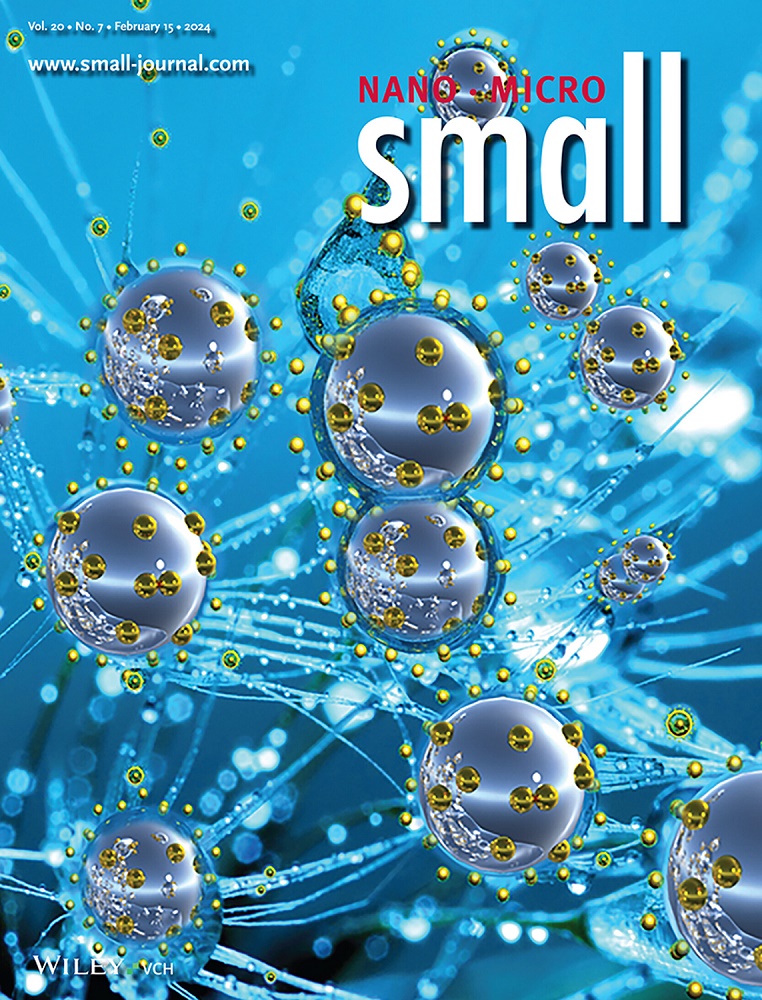Recycled Anode Materials from Manufacturing Industry for Anion Exchange Membrane Water Electrolyzer
IF 13
2区 材料科学
Q1 CHEMISTRY, MULTIDISCIPLINARY
引用次数: 0
Abstract
As the energy industries, such as secondary batteries and fuel cells, expand rapidly, the demand for transition metals used as electrode materials is increasing, which has led to a rise in their prices. One promising strategy to address these challenges is upcycling, which involves recycling transition metal-based waste from various industries. In this study, a heterostructure electrocatalyst for anion exchange membrane water electrolysis is developed by upcycling iron-based waste from the automotive industry. The iron-based swarf is converted into single-phase Fe2O3 by removing surface impurities through calcination in air. Subsequently, NiFe-LDH is formed via sequential hydrothermal synthesis, resulting in NiFe-LDH/Fe2O3 heterostructured electrocatalysts. The hetero-interface between NiFe-LDH and Fe2O3 significantly reduced the electrochemical activation barrier, enhancing oxygen evolution reaction (OER) activity and, furthermore, achieving high-performance AEMWE. This approach not only reduces waste but also provides a cost-effective alternative to traditional materials, highlighting the potential for sustainable and efficient energy solutions.

阴离子交换膜水电解槽用制造业再生负极材料
随着二次电池、燃料电池等能源产业的迅速发展,对用作电极材料的过渡金属的需求也在增加,导致其价格上涨。解决这些挑战的一个有希望的策略是升级回收,包括回收来自各个行业的过渡金属废物。本研究通过对汽车工业废铁的升级回收,开发了一种用于阴离子交换膜电解的异质结构电催化剂。铁基结块在空气中煅烧去除表面杂质,转化为单相Fe2O3。随后,通过顺序水热合成NiFe-LDH,得到NiFe-LDH/Fe2O3异质结构电催化剂。fe - ldh和Fe2O3之间的异质界面显著降低了电化学激活势垒,提高了析氧反应(OER)活性,从而实现了高性能的AEMWE。这种方法不仅减少了浪费,而且提供了一种具有成本效益的传统材料替代品,突出了可持续和高效能源解决方案的潜力。
本文章由计算机程序翻译,如有差异,请以英文原文为准。
求助全文
约1分钟内获得全文
求助全文
来源期刊

Small
工程技术-材料科学:综合
CiteScore
17.70
自引率
3.80%
发文量
1830
审稿时长
2.1 months
期刊介绍:
Small serves as an exceptional platform for both experimental and theoretical studies in fundamental and applied interdisciplinary research at the nano- and microscale. The journal offers a compelling mix of peer-reviewed Research Articles, Reviews, Perspectives, and Comments.
With a remarkable 2022 Journal Impact Factor of 13.3 (Journal Citation Reports from Clarivate Analytics, 2023), Small remains among the top multidisciplinary journals, covering a wide range of topics at the interface of materials science, chemistry, physics, engineering, medicine, and biology.
Small's readership includes biochemists, biologists, biomedical scientists, chemists, engineers, information technologists, materials scientists, physicists, and theoreticians alike.
 求助内容:
求助内容: 应助结果提醒方式:
应助结果提醒方式:


